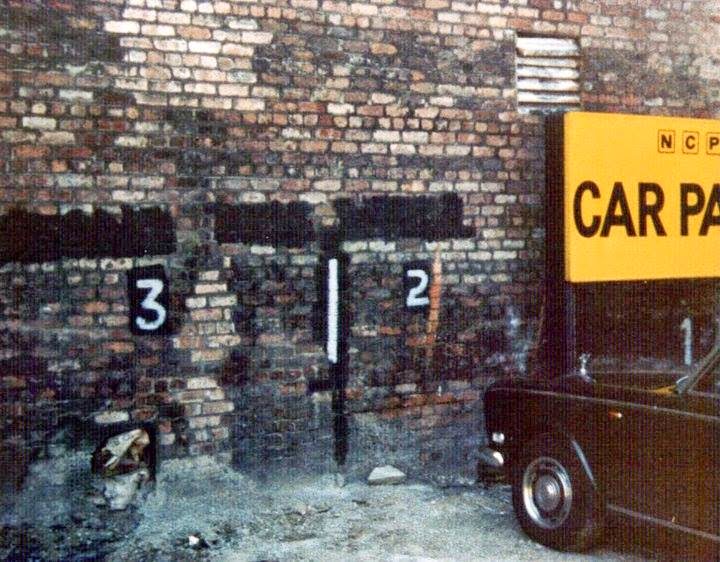Just off the Hereford
to Abergavenny road (A465), between Wormbridge and Wormlow Tump lies the
ancient parish of Kilpeck. It contains a pub, a few houses, the remains of a
castle and a remarkable church. On a still summer’s day there is magic in climbing the motte to what remains of the castle (a wall), sit for a time and just
look around. It is hard to believe that 1,500 years ago Celts and Saxons farmed
these lands in relative harmony. Even the Normans,
not noted for their pacifism, were seduced by something in the air – and Kilpeck
church is witness to that.





In the Middle Ages Kilpeck was a thriving settlement with its church and
castle. King John visited it three times in four years. Now little is left but
a church that has survived everything history could throw at it: the Reformation,
iconoclastic puritans, Victorian prudes (with the exception of one lady
perhaps) even the weather. The church is built of Herefordshire red sandstone,
which is usually susceptible to the corrosive effects of rain and ice. There
are rational explanations. The Kilpeck sandstone has developed a hard patina
that provides some protection, but however it is explained the church exudes a
mysterious peace, and will probably be there for another thousand years.
Walking down from the motte to the church
The Normans arrived in Kilpeck soon after the
Conquest and it was given to William fitz Norman, a kinsman of the Conqueror. William’s
son, Hugh de Kilpeck was Keeper of the King’s Forests and in 1140 he built the
church. With its three, clearly defined sections – nave, chancel and apse – it is
now almost unique; especially with its semi circular apse. Most have been
destroyed or replaced by small rectangular alternatives. Another point of interest is that instead of destroying the earlier Saxon Church - the usual Norman practise - Hugh de Kilpeck incorporated it. He also did something else in keeping with its history and perhaps in some inexplicable deference to the 'sense of place' which still exists.
There has been a
church on this site since the earliest days of Christianity. The village's name
of Kilpeck is probably derived from kil Pedic, the "cell of St
Pedic," who is otherwise unknown but was likely a local Celtic holy man.
Records in the Book of Llandaff indicate that "Kilpeck church with all its
lands around" was given to that diocese in 650 AD. Not only did he retain elements of the previous church, he decorated it in a weird and wonderful melding of celtic, saxon and viking imagery.

Around the top of
the Romanesque arch you can see chevron moulding, followed by Norman beakheads.
Below that is the Tympanium with its carving of the Tree of Life. On each door jamb you can see two warrior
figures – not Norman knights but clearly celt, referred to now as the ‘Welsh Warriors’.
Serpents slither up and down the two pillars. The serpents are hungrily
devouring each others’ tails. This idea of evil consuming evil is reinforced on
the left hand column with its carving of a basilisk and a lion in conflict. If you look really carefully - on the right - you will see the ubiquitous Green Man.
Most medieval churches were painted so this would been a riot of colour, but, judging by microscopic flakes, celtic colours not Norman.
Inside the church the eye is drawn to the two romanesque arches leading to the altar in the apse.
Again, on each pillar you have carvings. One is clearly St Peter carrying the keys of Heaven. The others may be Evangelists though some of Celtic tonsures, others Roman.
The apse where the
eye is drawn to an early example of rib vaulting. The ribs intersect in
four identical heads called Cat Masks. You can find similar ones in Durham
Cathedreal or Elkestone
Church in Gloucestershire
The exterior of the church burst with imagery
with no less than 89 corbels. I have two favourites. Below is the Sheela Na Gig,
gorgeous in its obscenity. And again, against all the odds – Puritans and
Victorians to name just a few – it survived. One explanation is that it may
have been depicted as a fool opening her heart to the devil. Another
explanation – though dubious because the same story has been repeated elsewhere
– was that it depicted the patron’s wife after he refused to pay the mason for
work done. Whatever the case the fact that a Victorian lady objected to a
corbel on the front of the church but made no objection to this is curious. Rumour
has it that the offending corbel, subsequently erased, was that of a man with a
big penis.



To the back of the
church are carved crocodiles shown devouring their enemy, the Hydrus. The
latter covered itself with mud, slid into the crocodile's mouth and split open
in its belly. It thus represents Christ's Harrowing of Hell - when, between His crucifixion and resurrection, Christ descended into Hell to save the righteous imprisoned there since Adam.
My camera doesn't do justice to these carvings. If you would like to see the full range in sharp focus and close up there is a wonderful link
here






































